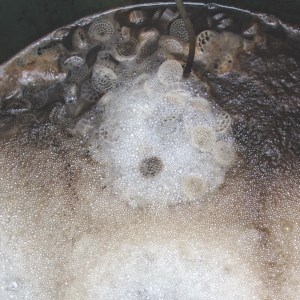Contact
Department of Aquatic Sciences and Assessment, Division of Environmental Organic Chemistry and Ecotoxicology

Food waste is often kept separate from other waste and used to produce biogas. A residual fraction with high nutrient content remains which can be used as a fertilizer.
The residual fraction is a liquid product with high water content and transport out of the city for use in agriculture is not optimal from an environmental perspective. Instead, the residual product could be used to produce vegetables and mushrooms in an integrated system adapted for urban production.
This project will investigate the risk of unwanted substances, such as heavy metals, pesticides and food-borne pathogens, being transferred to the cultivated plants.
The project is a collaboration between the Department of Biosystems and Technology (SLU), Department of Aquatic Sciences and Assessment (SLU), and Lund University of Technology.
You can read more about the project at the website of the Department of Biosystems and Technology: Food waste to new food in an urban context – production, risk assessment and consumer acceptance.